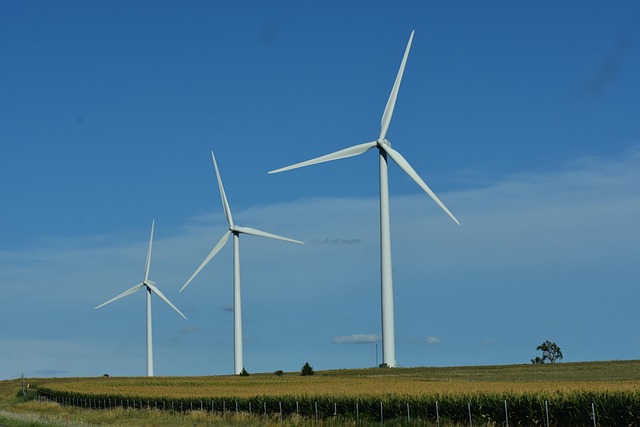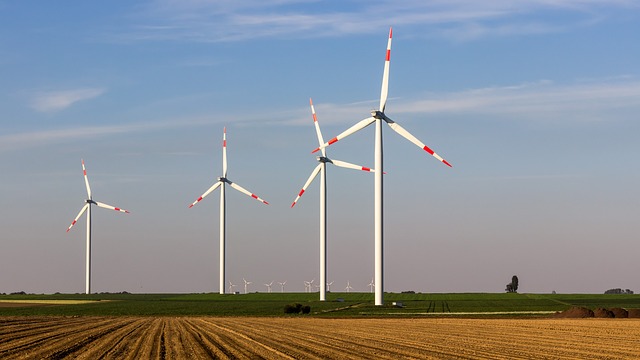The Silent Revolution: How Renewable Power is Changing Our World
The dawn of the 21st century marked an extraordinary turning point in the global energy landscape. As climate change intensified and fossil fuel reserves dwindled, the need for sustainable energy solutions became imperative. This shift is often described as ‘The Silent Revolution’—a transformation driven largely by renewable power sources such as solar, wind, hydroelectric, and geothermal energy. These alternatives not only promise to reshape our energy future but also offer far-reaching economic, social, and environmental benefits.
The Rise of Renewable Energy Sources
Over the last two decades, renewable energy has transitioned from a niche market into a mainstream powerhouse. The International Energy Agency (IEA) reported that in 2020, renewable energy accounted for nearly 30% of the world’s electricity generation, marking the highest share ever. In many regions, particularly in Europe and parts of the United States, renewables are becoming the cheapest source of electricity generation. This shift is attributed to significant technological advancements, cost reductions, and supportive government policies.
Economic Impacts of the Renewable Revolution
The transition to renewable energy is not just an environmental imperative but also an economic opportunity. The renewable sector has created millions of jobs worldwide. In 2019, the Global Wind Energy Council (GWEC) reported that the wind industry employed over 1.2 million people, and the solar sector is rapidly catching up, with similar employment statistics. These jobs span the entire value chain, from research and development (R&D) to manufacturing, installation, and maintenance.
Additionally, as renewables become more integrated into global markets, energy prices have stabilized. Traditional energy markets are often susceptible to fluctuations in price due to geopolitical tensions and resource scarcity. Renewables, once installed, operate at a marginal cost close to zero, providing a cushion against price volatility. This stability encourages investment and long-term planning for businesses and governments alike.
Environmental Benefits and Climate Mitigation
The environmental benefits of renewable power sources are staggering. Transitioning from fossil fuels to renewables can significantly reduce greenhouse gas emissions, which are the primary culprits behind climate change. According to a study by the Global Climate Action Summit, shifting to renewable energy could cut emissions by up to 70% by 2050. This transition is crucial not just for meeting international climate commitments such as the Paris Agreement but also for safeguarding the planet for future generations.
Moreover, renewable energy has a smaller environmental footprint compared to conventional energy sources. Solar panels and wind turbines consume less water and produce significantly less waste than fossil fuel extraction processes. This shift helps conserve vital ecosystems and biodiversity, contributing to healthier environments for both humans and wildlife.
Technological Innovations Driving Change
The rapid advancement in renewable technologies is a driving force behind the silent revolution. Innovations in solar panel efficiency, wind turbine design, and energy storage are reshaping the energy market. The advent of high-efficiency solar photovoltaic cells, for example, has increased energy production while decreasing costs. Wind technology has also evolved, with larger and more efficient turbines being installed offshore, tapping into stronger and more consistent wind currents.
Energy storage technologies, particularly lithium-ion batteries, have emerged as game-changers. They allow for the storage of excess energy generated during peak production times, ensuring a reliable power supply even when generation is low, such as during cloudy days or calm winds. As energy storage costs continue to decline, integrating renewables into existing power grids becomes more feasible, facilitating the transition from centralized fossil fuel-based power plants to decentralized renewable systems.
Societal Transformations and Energy Equity
The shift towards renewable energy is not just about power generation; it’s about social transformation and energy equity. One of the most significant aspects of renewable power is its potential to enhance energy access in underserved communities around the globe. Rural areas in developing countries, often devoid of reliable electricity, can be powered through decentralized solar installations, fostering opportunities for education and economic development.
In many instances, local communities actively participate in renewable energy projects, promoting a sense of ownership, empowerment, and social cohesion. Community-led solar initiatives, for example, have proven to be a viable path to energy independence, reducing reliance on centralized grids that are often vulnerable to disruption. Such initiatives exemplify how the silent revolution is turning populations into active stakeholders in their energy futures.
The Challenges Ahead
Despite the promising trajectory of renewable energy, several challenges remain. Transitioning entire economies from fossil fuels to renewables requires significant infrastructure investments and policy commitment. Some traditional energy sectors are resistant to change due to fears of job loss and economic instability, necessitating thoughtful strategies for retraining workers and transitioning them into the renewable workforce.
Moreover, energy storage solutions still need to scale to meet the demands of a fully renewable grid. Current battery technologies may fall short in terms of capacity and materials sustainability. Research into next-generation batteries, including solid-state and flow batteries, is ongoing, but the timelines for commercialization and widespread adoption are uncertain.
Policy and Global Cooperation
Successful implementation of renewable energy technologies also hinges on strong policy frameworks at local, national, and international levels. Governments play a significant role in creating the incentives needed for renewables to flourish. These may include tax credits, subsidies, tariffs on carbon emissions, and regulations mandating renewable energy usage. The role of international collaboration cannot be overstated. Countries must work together to share technologies, knowledge, and resources, fostering a global green economy.
Recently, global initiatives such as the United Nations’ Sustainable Development Goals (SDGs) have positioned renewable energy as a critical pillar for achieving global sustainability targets. While many nations have made commitments to reduce their carbon footprints and invest in renewables, the pace of change varies significantly. Ensuring that all countries, particularly developing ones, receive support in technology transfer and financial backing is essential for a unified global transition.
The Future of Renewable Energy
The future of renewable energy appears bright, although it will require sustained collaboration and commitment. As technology continues to advance and costs decline, the global energy landscape will inevitably evolve, moving towards a decentralized, resilient, and sustainable system. Cities and communities are already investing in renewable infrastructure to address local priorities and create tailored solutions to their energy needs.
Advanced smart grid technologies are poised to optimize energy management, allowing us to use energy more efficiently and integrate renewable sources seamlessly. Electric vehicles (EVs), solar-powered homes, and green buildings are no longer figments of the future—they are becoming a reality, transforming everyday life.
Ultimately, the silent revolution is about empowering individuals and communities to take charge of their energy needs while simultaneously addressing pressing global challenges. By embracing renewable power, we are accommodating the requirements of a growing population, ensuring energy security, and protecting the environment for generations to come.
Conclusion
The silent revolution of renewable energy is not simply a technological transition; it represents a fundamental change in our societal values and priorities. By recognizing the potential of renewable power, we can usher in a new era that prioritizes sustainability, resilience, and social equity. While we face significant challenges ahead, the advancements in renewable technologies and the collective will of nations, communities, and individuals around the world provide hope for a sustainable energy future.



